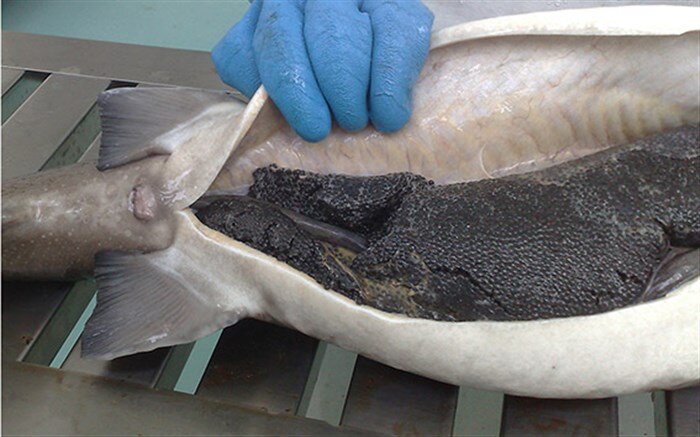Caviar output reaches 12 tons in a year

TEHRAN – Head of Iran Fisheries Organization (IFO) has said the country’s annual caviar production has reached 12 tons, IRNA reported.
Speaking on the sidelines of the Sixth National Conference and Exhibition on Caviar and Related Industries, Nabiollah Khoun-Mirzaei said over 3,500 tons of sturgeon meat have also been produced which indicates an upward trend in the production of the mentioned product.
Underlining the outstanding growth in the production of the mentioned fish, the official noted that the country’s annual caviar output stood at only one ton in the Iranian calendar year 1392 (ended on March 20, 2014), and only 600 tons of sturgeon meat was produced.
“With the ban on commercial sturgeon fishing following the agreement of the Caspian littoral states, the breeding of these fish species has accelerated in the region,” the deputy agriculture minister said.
He stated that the development of the sturgeon breeding industry is on the IFO agenda, adding: "In recent years, in some parts of the country, sturgeon breeding in cages has been on the agenda and we are trying to develop this type of breeding."
Noting that the Iranian caviar is the best and most expensive caviar in the world, Khoun-Mirzaei said: "Considering the popularity of Iranian caviar and sturgeon meat in the world and the high price and profitability of the mentioned commodity, the export of the product is done officially through the Islamic Republic of Iran Customs Administration (IRICA).”
The Persian sturgeon (Acipenser persicus) is a species of fish in the family Acipenseridae. It is found in the Caspian Sea and to a lesser extent the Black Sea and ascends certain rivers to spawn, mainly the Volga, Kura, Araks, and Ural Rivers.
The threats faced by this fish include excessive fishing with the removal of immature fish before they have been bred, damming of the rivers, loss of spawning areas, and water pollution.
Five Caspian states have banned the exploitation of these reserves in an agreement signed during the third meeting of the Commission on conservation and rational use of water bioresources of the Caspian Sea held in Tehran in 2019.
EF/MA

Leave a Comment